Yes, you can carve effectively on all-mountain skis - and shorter skis make it even easier in 2025.
Here’s why: shorter skis, like those from Snowfeet (44–120 cm), are lighter, more agile, and require less effort to turn compared to traditional long skis (150–200 cm). They’re beginner-friendly, portable, and versatile across terrains, making them ideal for carving on groomed runs, moguls, and even terrain parks.
Key Takeaways:
- Shorter skis = easier carving: Less pressure on knees, quicker edge transitions, and better control.
- Portability: Fits in backpacks; no roof racks needed.
- Beginner to advanced options: Snowfeet offers models for all skill levels, from 44 cm Skiskates to 120 cm Short Skis.
- Comparison with long skis: Short skis sacrifice high-speed stability but excel in agility and reduced fatigue.
Quick Comparison:
| Feature | Snowfeet (44–120 cm) | Long Skis (150–200 cm) |
|---|---|---|
| Maneuverability | Quick, responsive turns | Slower, more effort |
| Learning Curve | Beginner-friendly | Steeper, advanced skills |
| Portability | Backpack-friendly | Requires ski bag |
| Carving Precision | Excellent edge control | Less agile |
| Deep Powder | Limited flotation | Superior flotation |
Short skis are reshaping all-mountain skiing in 2025. Whether you’re a beginner or a seasoned skier, they deliver a fun, efficient, and accessible way to carve effectively.
How to Carve on Skis | 5 Tips & Drills for Beginners / Intermediates
All-Mountain Skis vs. Carving Skis
Understanding the differences between all-mountain and carving skis can help you make the most of your carving experience. Both have their strengths, but Snowfeet’s shorter skis bring some exciting advantages to the table. Let’s break it down.
Main Differences Between All-Mountain and Carving Skis
Carving skis are built for precision. Their traditional camber and stiff construction make them ideal for gripping groomed slopes. With a shorter turning radius, they excel at making quick, tight turns on hard-packed snow. However, this focus on precision makes them less adaptable to off-piste conditions like moguls, tree runs, or powder.
All-mountain skis, on the other hand, are the jack-of-all-trades. Their variable widths and rocker profiles make it easier to initiate turns in a wide range of conditions. Plus, they offer turning radii that can range from 15 m to over 25 m, making them versatile for different terrains.
Here’s where Snowfeet steps in with something different. Their shorter skis, ranging from 44 cm to 120 cm, offer the quick, precise turning of carving skis while maintaining versatility across various terrains.
"Short skis are highly maneuverable, making them perfect for navigating tight spaces such as moguls or terrain parks. They are easy to turn which helps to navigate through tricky terrain with confidence." – Snowfeet Team
Why Snowfeet Outshines Rossignol and Atomic for Carving
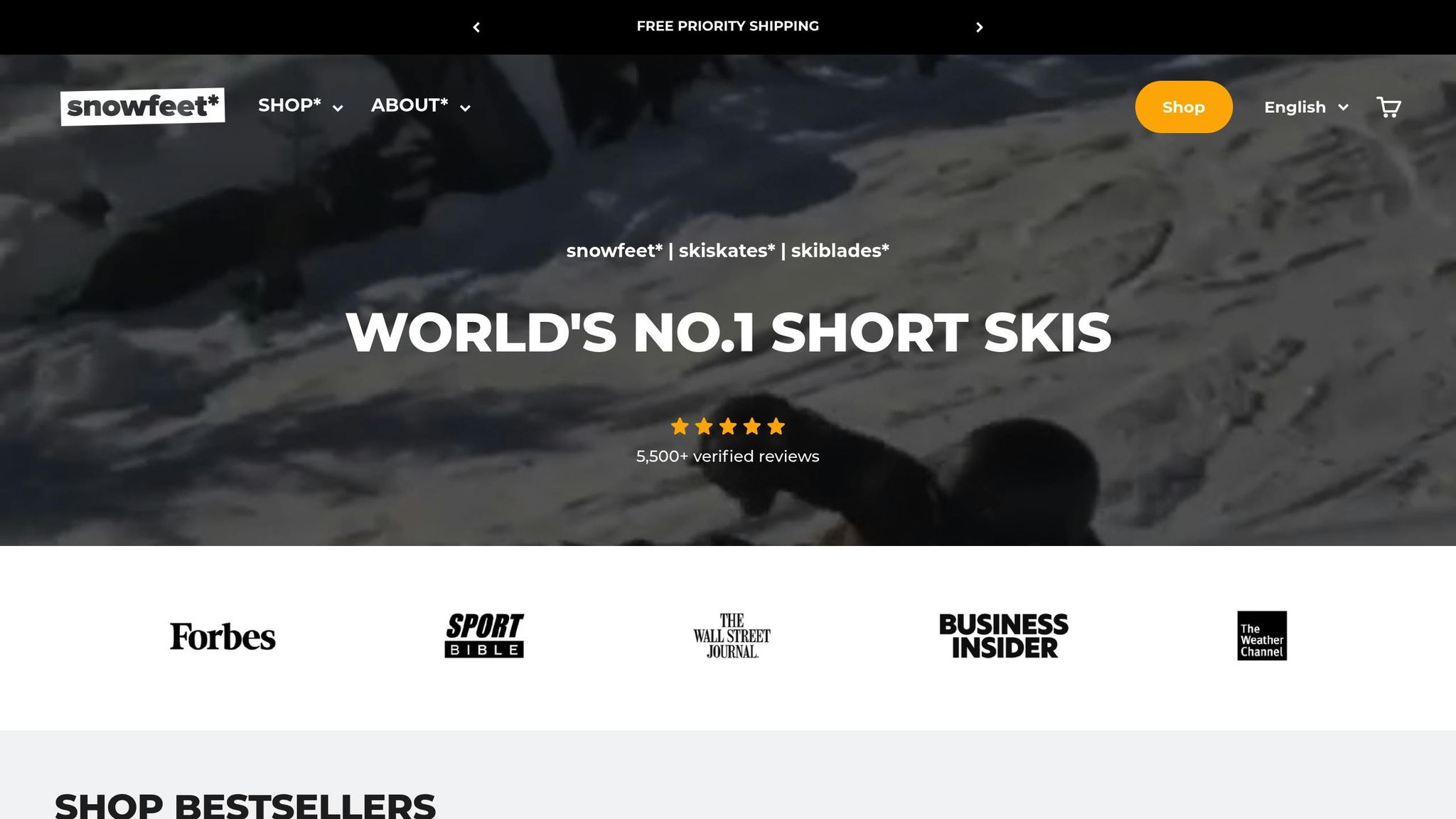
Traditional ski brands like Rossignol and Atomic focus on longer skis, often exceeding 170 cm. These lengths offer excellent stability at high speeds but require significant physical effort and advanced technique to carve effectively.
Snowfeet takes a different path. Their products, like the 44 cm Skiskates and 120 cm Short Skis, are designed to reduce physical strain, making carving easier and more accessible. Shorter skis don’t need as much leverage to engage the edges, giving you a more agile and responsive ride.
Here’s a quick comparison:
| Feature | Traditional Brands (Rossignol/Atomic) | Snowfeet Products |
|---|---|---|
| Length | 68+ inches (170+ cm) | 44–120 cm |
| Maneuverability | Requires significant effort | Superior agility |
| Learning Curve | Steep; advanced technique required | Beginner to intermediate friendly |
| Carving Effort | High physical demand | Less pressure needed on knees |
| Portability | Requires roof racks for transport | Easily fits in backpacks or car trunks |
Snowfeet’s shorter ski designs stand out, especially on narrow, tight slopes where traditional long skis can feel cumbersome. Their reduced effort and increased maneuverability make them a game-changer for carving.
For example, Snowfeet’s 99 cm Skiblades (priced at $490) and 120 cm Short Skis (priced at $690) are tailored for carving enthusiasts. The 99 cm option is perfect for intermediate skiers who want a mix of versatility and fun. Meanwhile, the 120 cm model offers more speed and stability on bigger slopes without the bulk of traditional long skis. Unlike the rigid feel of many carving skis, Snowfeet’s shorter designs add a playful, lively element to your ride. They’re perfect for quick turns, jumps, and tricks, making carving not just effective but genuinely enjoyable.
How to Carve on Short Skis
Carving on short skis, especially with Snowfeet products, requires a specific approach. It’s all about mastering body position, weight distribution, and adapting your technique to different snow conditions.
Body Position and Weight Distribution
Start with a shoulder-width stance, keeping your weight centered and slightly shifted back. For added balance, you can place one foot slightly ahead, but avoid spreading your feet too far apart. When it’s time to stop, distribute your weight evenly across both feet. This stable position is key to nailing those precise carving moves with Snowfeet.
Carving Techniques for Snowfeet Products
Snowfeet Skiblades are designed for control and balance, featuring metal edges and graphite bases that make carving smoother. Keep your knees bent to absorb bumps and maintain a centered - or slightly back - weight position to avoid catching the ski tips.
Carving with Snowfeet combines elements of skiing and skating. Angle your mini skis and lean into the turn, using a lateral push that feels natural if you’ve ever skated or played hockey. The 44 cm Skiskates are built to seamlessly blend these movements, making them perfect for this style. If you’re new to it, practice on flat, snowy terrain to develop the muscle memory needed for confident turns. Over time, you can adjust these techniques to suit different conditions.
Carving on Different Snow Conditions
Snowfeet gear performs well across a variety of snow types:
- Groomed snow: Offers great edge grip, making it ideal for carving practice.
- Powder: Skiblades handle well in snow depths up to 4 inches (10 cm), giving you control without sacrificing maneuverability.
- Icy terrain: Metal edges and regular waxing are your best friends for maintaining grip here.
However, steer clear of very steep or rough terrain where the shorter skis might feel unstable. For practice, groomed slopes and snow parks are your best bet. Use a heel brake or a hockey-style stop to slow down effectively while you refine your skills.
sbb-itb-17ade95
Snowfeet vs. Long Skis: Performance Comparison
Let’s break down how Snowfeet stacks up against traditional long skis when it comes to performance. Long skis from brands like Head, Atomic, and Rossignol typically measure between 5 and 6.5 feet (150–200 cm), which can make them less nimble on the slopes. Snowfeet, on the other hand, range from just 17 inches to 4 feet (44–120 cm). That compact size delivers a level of agility that’s hard to ignore. Plus, it makes learning much easier, as you’ll see in the comparison below.
With their shorter length, Snowfeet products make skiing less physically demanding. This means less fatigue, longer practice sessions, and a quicker path to mastering the slopes.
Weight and portability are other major wins for Snowfeet. Long skis can be bulky and heavy, often requiring a ski bag for transport. Snowfeet, being lightweight and compact, can fit right into a backpack. No more lugging around cumbersome equipment!
Now, let’s talk about where traditional long skis shine. They’re excellent for high-speed stability and perform better in deep powder, thanks to their larger surface area. But unless you’re racing downhill or tackling untouched powder, these advantages don’t always outweigh the convenience and versatility of Snowfeet. On groomed runs and all-mountain terrain, Snowfeet hold their own - and then some.
"Long skis offer stability at high speeds and enhanced grip on hard snow. Simply put, the longer board, the more stability you have. However, you lose the fun and playfulness of keeping the front-back balance." - Snowfeet Team
Performance Comparison Table
| Feature | Snowfeet Products (44–120 cm) | Traditional Long Skis (150–200 cm) |
|---|---|---|
| Maneuverability | Quick, effortless turns | Slower transitions, more effort |
| Learning Curve | Beginner-friendly, fast progression | Steeper, more challenging |
| Weight | Lightweight, less tiring | Heavier, more exhausting |
| Portability | Fits in a backpack | Requires ski bag, harder to carry |
| Carving Precision | Excellent edge control, very responsive | Good but less agile |
| Terrain Parks | Perfect for tricks and jumps | Limited maneuverability |
| Groomed Runs | Smooth, quick edge transitions | Solid performance |
| Deep Powder | Limited flotation | Superior flotation |
In short, Snowfeet gear stands out for its versatility. While long skis dominate in high-speed stability and deep powder, Snowfeet excel across a variety of conditions - whether you’re carving groomed runs, navigating moguls, or hitting terrain parks. Their shorter design offers sharper edge control and quicker transitions, making the overall experience more dynamic and fun.
Which Snowfeet Product to Choose
Picking the right Snowfeet gear depends on your skill level and the way you like to carve. Each model is designed to suit different styles and terrains, so let’s break it down.
Options for Beginner to Advanced Skiers
If you’re new to skiing, the 99cm or 120cm Skiblades are your go-to choice. These provide extra stability and balance, making the learning curve a lot smoother.
"Skiboards are ideal for those who find long skis too heavy or cumbersome. Skiboards the answer to all beginners struggling to learn skiing." - Snowfeet Team
For those who’ve gotten the hang of the basics, the 65cm Skiblades are a solid next step. They’re more agile, perfect for improving your carving while keeping good control. Just keep in mind, they can be a bit less forgiving on balance, so they’re better for skiers with some experience under their belt.
Advanced skiers, you’re in for a treat with the 44cm Skiskates. These are all about maneuverability and creativity. Whether you’re hitting terrain parks or weaving through tight tree runs, their quick direction changes and trick potential make them a favorite for seasoned skiers.
Now, let’s talk about matching your carving style to the ideal gear.
Matching Carving Style to Snowfeet Gear
Your carving style plays a big role in choosing the right Snowfeet product. If you’re into quick, playful turns or want to explore skating-style movements, the 44cm Skiskates are your best bet. Their parabolic shape and narrow design make them incredibly responsive, almost like skating on snow.
"In my opinion, Skiskates is the best product for slopes we developed so far. I love how easy they are to ski and skate and how many different kinds of tricks I can perform without much effort and almost no restrictions." - Zbyněk, Snowfeet founder
For those who love precision carving, the 65cm–99cm Skiblades are a dream on groomed runs. They’re easier to balance than Skiskates but still deliver excellent edge control. The 99cm model stands out for its stability while keeping things agile - perfect for carving enthusiasts.
If you’re tackling mixed conditions, including powder, the 120cm Short Skis are a great all-around option. They handle deeper snow better than the shorter models while still offering the fast edge transitions Snowfeet gear is known for.
Terrain park fans should lean toward the shorter models (44cm–65cm) for their trick-friendly design. Meanwhile, all-mountain carvers will appreciate the versatility of the 99cm–120cm range. These longer models are also better for higher speeds, making them ideal for wide-open slopes and aggressive carving.
No matter the model, all Snowfeet products are lightweight and easy to carry, helping you stay energized for those long carving sessions.
Why Snowfeet is Better for Carving in 2025
Snowfeet stands out as a game-changer for carving in 2025, leaving traditional long skis (like Rossignol or Atomic) in the dust. Thanks to their unbeatable mix of agility, convenience, and ease of use, Snowfeet is redefining how modern skiers hit the slopes. Let’s unpack why they’re the go-to choice this year.
First off, size matters - and Snowfeet’s compact design gives them a huge edge. Ranging from just 44 cm to 120 cm, these mini skis allow for quicker edge transitions and sharper turns, giving you precise control that bulky long skis simply can’t match. Plus, they’re ridiculously easy to transport. Toss them in a backpack or slide them into your car trunk - no need for roof racks or oversized bags. More time skiing, less time wrestling with gear.
"With these little skis, you feel much more agile, faster, and above all – comfortable. No buckles, no heavy boots – just strap in and go." - Jakub F, Snowfeet User
Snowfeet also makes skiing more beginner-friendly. Their enhanced control helps newbies pick up carving techniques in just a few hours. No steep learning curve here - just strap in and start having fun.
Another standout feature? Boot flexibility. Forget the stiff, expensive ski boots. With Snowfeet, you can use your regular winter boots or snowboard boots. It’s a game-changer for comfort and cuts down on costs, making the whole experience way more enjoyable.
"It is truly the best of both worlds. Comfort for our feet and still being able to ski... Nice and mobile, comfortable and it’s truly a lot of fun. I can seriously recommend them to anyone." - Niels Staal, Snowfeet User
Durability is another win. Built with fiberglass-reinforced materials and sustainable wood cores, Snowfeet products are designed to handle season after season of carving action. These aren’t just fun - they’re built to last.
And let’s talk versatility. While traditional carving skis are mostly limited to groomed slopes, Snowfeet thrives on a variety of terrains. Whether it’s hiking trails, sledding hills, or even your backyard, Snowfeet lets you carve wherever the mood strikes. It’s all about getting more fun and value out of your gear.
Snowfeet is more than just a product - it’s the evolution of skiing. Lighter, more agile, and way more accessible, they’re perfect for anyone looking to sharpen their carving skills or explore new terrain. If you’re serious about skiing smarter, Snowfeet delivers everything you need.
FAQs
How do Snowfeet's shorter skis perform compared to traditional long skis on different terrains?
Snowfeet’s shorter skis, like Skiblades (65–120 cm) and Skiskates (44 cm), are all about easy handling and precision. Their compact design makes turning a breeze, which means less effort and more fun - perfect for groomed trails, terrain parks, or even light powder. Because they’re so easy to control, they’re a great pick for beginners or anyone just looking to enjoy a playful day on the slopes without breaking a sweat.
On the flip side, traditional long skis (150–200+ cm) shine when it comes to stability and speed. They’re built for steep slopes and deep powder, offering better flotation in heavy snow. But, they demand more skill and energy to manage. That’s where Snowfeet’s shorter skis really stand out - they’re lightweight, portable, and versatile. Whether you’re new to skiing or a seasoned pro, these compact skis offer a fresh, agile way to explore all kinds of terrain.
Why use regular winter boots with Snowfeet instead of traditional ski boots?
Using your regular winter boots with Snowfeet products comes with some great perks compared to traditional ski boots. First off, Snowfeet are designed to pair perfectly with most winter or snowboard boots, so you don’t need to splurge on pricey, clunky ski boots. Chances are, you can use the boots you already own, which means saving money and skipping the hassle of extra gear.
Second, winter boots are lighter and way more comfortable. That means you can easily stroll between runs or hang out après-ski without feeling like you’re lugging around bricks on your feet.
And lastly, this combo makes skiing way less intimidating for beginners. By ditching the bulky, complicated ski gear, Snowfeet keeps things simple, portable, and fun. It’s a fresh way to enjoy the slopes without all the fuss!
What are the best tips for beginners learning to carve on Snowfeet's short skis?
If you're just getting started with carving on Snowfeet's short skis, there are a few basics to keep in mind that’ll make the experience smoother and more enjoyable. First up: body position. Stand with your legs about shoulder-width apart, keep your knees slightly bent, and aim for a balanced stance. Don’t lean too far forward - keeping your weight centered or even slightly back will give you better control and stability, especially during turns.
When it’s time to turn, tilt your Snowfeet onto their edges and shift your body gently in the direction you want to go. Their shorter length makes turning feel more natural and precise compared to traditional long skis. And don’t forget to practice stopping! Techniques like the hockey stop are great for controlling your speed. Snowfeet aren’t just easier to handle - they make carving feel intuitive and, honestly, a lot more fun for beginners.














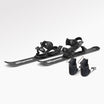






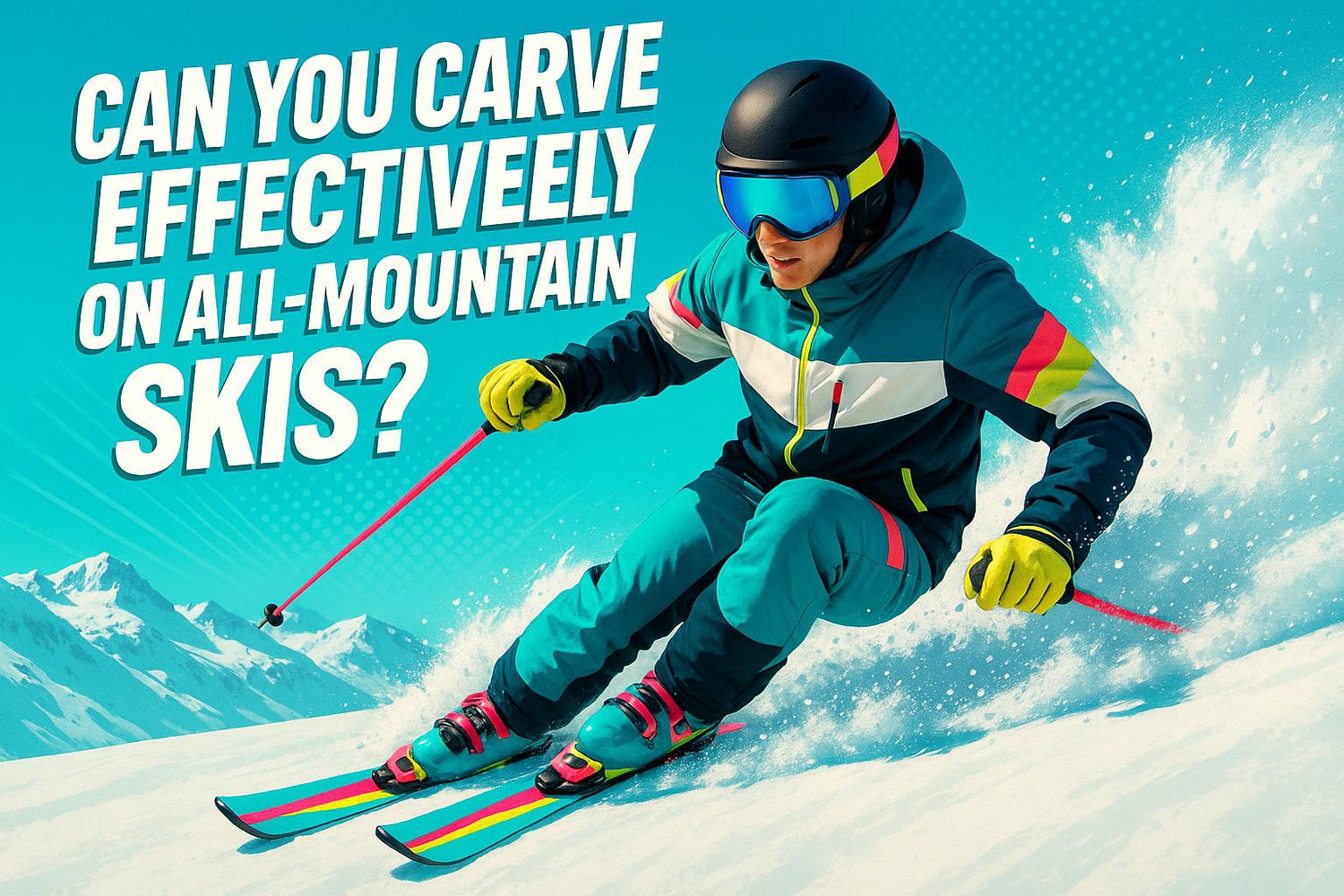
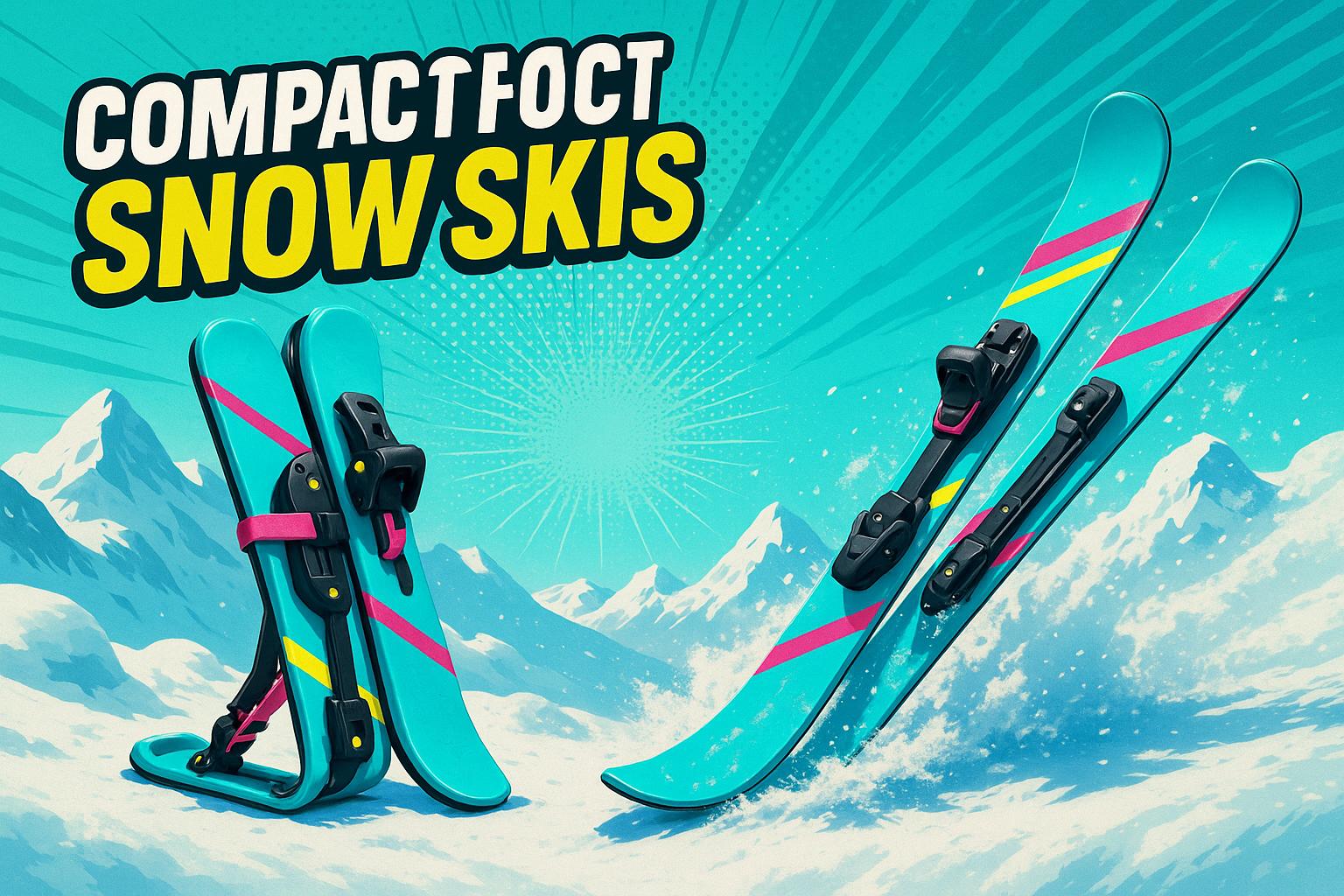
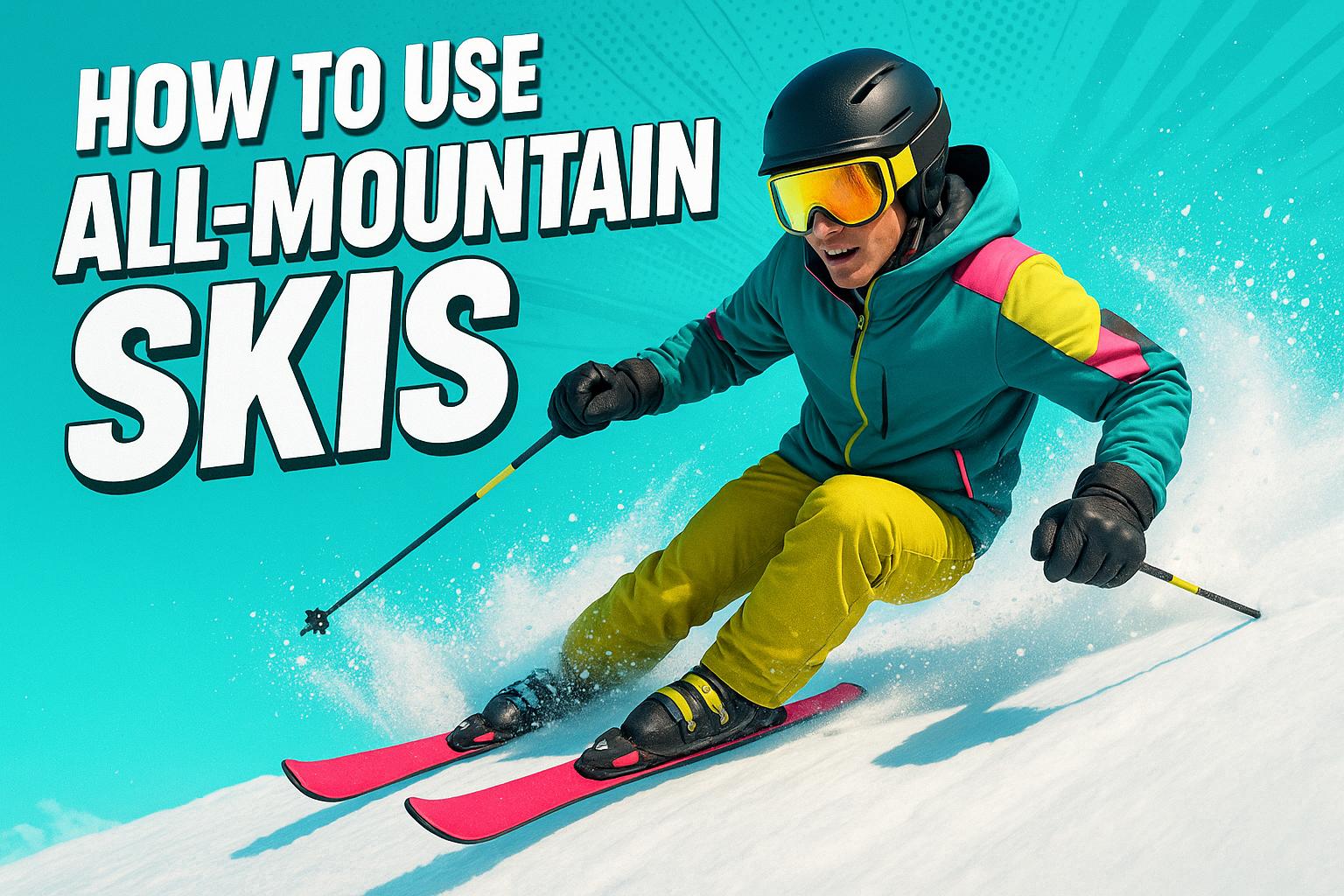










Leave a comment
This site is protected by hCaptcha and the hCaptcha Privacy Policy and Terms of Service apply.